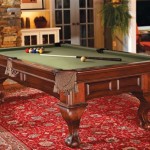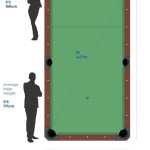Pottery Barn Entryway Tables: Style and Functionality for Your Home
The entryway, often the first space encountered upon entering a home, serves as a crucial transition zone. It sets the tone for the rest of the house, offering a glimpse into the homeowner's style and organizational habits. The selection of appropriate furniture for this space is therefore paramount. Entryway tables, in particular, provide both aesthetic appeal and practical utility, allowing for storage, display, and a welcoming first impression. Pottery Barn offers a diverse range of entryway tables, catering to various design preferences and functional needs. This article will explore the features, benefits, and considerations when choosing a Pottery Barn entryway table.
Pottery Barn's reputation for quality and timeless design is evident in their entryway table collection. Their tables are constructed from a variety of materials, including solid wood such as pine, mango wood, and reclaimed wood, as well as metal and glass accents. The construction quality is typically robust, ensuring longevity and durability. Styles range from rustic and farmhouse to modern and contemporary, allowing homeowners to find a piece that complements their existing décor. The finish options are equally varied, including stained wood finishes, painted finishes, and natural wood tones, offering further customization to match individual preferences.
Key Point 1: Exploring the Range of Styles and Materials
Pottery Barn's entryway table selection spans a wide range of styles, each designed to evoke a distinct aesthetic. Traditional entryway tables may feature ornate detailing, turned legs, and rich wood finishes, often drawing inspiration from classic furniture designs. These tables can create a sense of elegance and formality in the entryway. Farmhouse-style tables, on the other hand, emphasize rustic charm with distressed finishes, planked wood tops, and simpler silhouettes. These tables often incorporate open shelving or drawers for practical storage, contributing to a more relaxed and inviting atmosphere.
Modern entryway tables from Pottery Barn are characterized by clean lines, minimalist designs, and a focus on functionality. These tables may feature sleek metal frames, glass tabletops, or geometric shapes, creating a contemporary and uncluttered look. For those seeking a more industrial aesthetic, Pottery Barn offers entryway tables with metal accents, reclaimed wood, and exposed hardware, offering a raw and edgy feel. Ultimately, the choice of style should align with the homeowner's personal taste and the overall architectural style of the house.
The materials used in Pottery Barn entryway tables contribute significantly to their overall appearance and durability. Solid wood tables, particularly those crafted from hardwoods like maple or oak, offer exceptional strength and longevity. These tables can withstand daily use and maintain their beauty for years to come. Reclaimed wood tables provide a unique and sustainable option, adding character and history to the entryway. The imperfections and variations in the wood grain create a one-of-a-kind piece that tells a story. Metal accents, such as iron legs or drawer pulls, add a touch of industrial flair and can enhance the table's structural integrity. Glass tabletops offer a sleek and modern look, allowing natural light to filter through and creating a sense of spaciousness.
The combination of style and material effectively determines the overall aesthetic and functionality of the entryway table. A solid wood farmhouse table with open shelving provides ample storage for shoes, baskets, and other entryway essentials, while a modern metal and glass table offers a streamlined surface for displaying decorative items and holding keys. Carefully considering both style and material ensures that the chosen entryway table not only complements the décor but also serves its intended purpose effectively.
Key Point 2: Functionality and Practical Considerations
Beyond aesthetics, the functionality of an entryway table is a critical consideration. The primary function of an entryway table is to provide a surface for placing items such as keys, mail, and bags upon entering the home. However, many Pottery Barn entryway tables offer additional storage solutions, enhancing their practicality. Drawers provide concealed storage for smaller items, such as gloves, scarves, and wallets, helping to keep the entryway clutter-free. Shelves offer open storage for shoes, baskets, or decorative items, allowing for easy access and display.
The size of the entryway table is also an important factor to consider. A table that is too large can overwhelm a small entryway, making the space feel cramped and unwelcoming. Conversely, a table that is too small may not provide sufficient surface area or storage. Measuring the dimensions of the entryway and considering the available space is essential before making a purchase. A general rule of thumb is to leave ample space for walking around the table and to avoid blocking doorways or pathways.
The height of the entryway table should also be appropriate for its intended use. A table that is too low may be uncomfortable to use for placing items, while a table that is too high may feel awkward. The ideal height typically ranges from 30 to 36 inches, but this can vary depending on personal preference and the height of other furniture in the entryway. Furthermore, the weight capacity of the table should be considered if it will be used to support heavy items, such as lamps or large decorative objects.
The placement of the entryway table can also impact its functionality. Positioning the table near the entrance door allows for easy access to keys and other essentials. Placing a mirror above the table can create a sense of spaciousness and provide a convenient place to check one's appearance before leaving the house. Adding a lamp to the table can provide ambient lighting and create a warm and inviting atmosphere. Ultimately, the optimal placement of the entryway table depends on the layout of the entryway and the homeowner's personal preferences.
Key Point 3: Evaluating Quality and Value
Pottery Barn is known for its commitment to quality, but it's important to carefully evaluate the construction and materials of any entryway table before making a purchase. Solid wood construction is generally considered to be the most durable and long-lasting option. However, the type of wood used can also affect the table's quality. Hardwoods, such as maple, oak, and cherry, are more resistant to scratches and dents than softwoods, such as pine. The joinery techniques used to assemble the table are also important. Dovetail joints and mortise-and-tenon joints are considered to be stronger and more durable than simpler joinery methods.
The finish of the entryway table can also impact its durability and appearance. A high-quality finish will protect the wood from moisture, scratches, and fading. Painted finishes should be smooth and even, with no visible brushstrokes or imperfections. Stained finishes should enhance the natural grain of the wood and provide a consistent color tone. The hardware used on the table, such as drawer pulls and hinges, should also be of good quality and securely attached.
When evaluating the value of a Pottery Barn entryway table, it's important to consider its price in relation to its quality, features, and style. While Pottery Barn tables tend to be more expensive than those offered by some other retailers, they often offer superior quality and design. Comparing the table's specifications, materials, and construction to those of similar tables from other brands can help determine whether the price is justified. Reading customer reviews can also provide valuable insights into the table's durability and overall satisfaction.
Furthermore, considering the table's long-term value is crucial. A well-constructed and stylish entryway table can last for many years, adding value to the home and providing a functional and aesthetically pleasing focal point in the entryway. Investing in a high-quality Pottery Barn entryway table can be a worthwhile investment, particularly if it aligns with the homeowner's personal style and enhances the overall appeal of the home.
Ultimately, selecting the right Pottery Barn entryway table requires careful consideration of style, functionality, and quality. By understanding the various options available and evaluating their features, homeowners can choose a table that not only complements their décor but also enhances the functionality and welcoming atmosphere of their entryway.

Heritage Farmhouse Console Table Pottery Barn

Palisades Reclaimed Wood Console Table Pottery Barn

Console Tables Sofa Entryway Pottery Barn

51 60 Inches Console Tables Pottery Barn

Parquet Reclaimed Wood Console Table Pottery Barn

Outdoor Console Coffee Accent Tables Pottery Barn

Griffin Reclaimed Wood Console Table Pottery Barn

Oakleigh Console Table Pottery Barn

Malcolm Grand Console Table Pottery Barn

Benchwright Grand Console Table Pottery Barn








